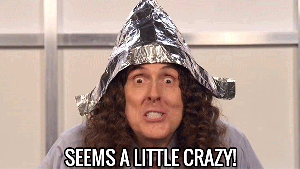Another draft of setting documents I'm still working on slowly but surely:
Nonhumans
Overview: While what they actually call themselves (and even how accurate the more general term applied to them is) can vary pretty dramatically, the land now called Goëtika has been home to a wide variety of sapient beings since the earliest recorded histories; some of these have come and gone, while others have changed over time, due to exposure to powerful magical forces, divine meddling, alchemical experimentation, or simple natural selection.
Humans currently outnumber the others by an order of magnitude or more, but this was not always so, and had much to do with the "Holiest Nights" purges committed by the fanatical Church of the Crimson God after it came to power.
The following are summaries of each playable "race," with more in-depth write ups to come. In terms of mechanics, players of nonhumans should work their nonhuman status into their High Concept Aspect ("Disdainful Elven Bard," "Grimly Cheerful Beastfolk") and take an additional Trouble Aspect specifically tied to their nature.
Elves: Somewhat taller than humans, with long pointed ears, skin that comes in a range of metallic colors -- from the scintillating like silver and gold, to earthy copper and bronze, or dark as iron -- and limbs that are proportioned and formed differently, the elves are perhaps the most uncanny to the average human perspective, being so close and yet so different...more so because the elves have no cultural concept of gender and find the idea alien.
While only subjugated clans remain, the elves are not native to these lands; they came to Goëtika several thousand years ago, during a period legends say was heralded by a hundred-day eclipse of the sun, an invasion force that quickly wore itself out against the combined strength of the peoples already established there. If there are any physical records of where it was they came from, they've long since been destroyed, and the clans are notoriously tight-lipped about their fragmented oral histories to humans.
Elves and humans are capable of interbreeding, and while their offspring most strongly resemble the parent that birthed them, there are several telling signs that can give their lineage away unless they go to great lengths to "pass" as one or the other -- a necessary effort, considering the long and deeply-held antipathy between the remaining clans and the Church.
Dwarves: In the King's Court, a game often played is to find the most droll use of a common response among the wealthy and idle nobility -- "we've a dwarf for that." The reason is simple: unlike humans, born into this world without a purpose and seeking their whole lives for it, the dwarves of Goëtika were literally made with one in mind. Originally crafted seven hundred years ago by the royal alchemists, dwarves were designed to work where and when common laborers could not, in the deepest and darkest mines and hottest smithies, from dawn until dusk in shifts that would leave even the hardiest human dead from exhaustion.
What their taskmasters did not foresee in their arrogance was that the dwarves would not stand for these conditions and rebelled in a series of conflicts known as the Workers' War. While the dwarves won their freedom to a degree and took possession of the Birthing Kilns, it was only centuries until the rise of the Church forced them back into subservient roles.
Now, new dwarves are only made by holy concession when the old finally wear down after hundreds of years of toil, and each begrudgingly takes the work available to them -- or finds a place among the mercenary companies.
Mutants: Outside the sheltering walls of castles and villages, the lands of Goëtika are dark and wild, and to wander them alone is the deepest folly; in crumbling ruins and twisted woods, old powers still lurk, and vanishingly few could ever be considered benign. It is said that those who encounter these powers become twisted in body and mind to serve their purposes, and pass their cursed forms down to their children.
While many mutants are unique, some share a common origin and even culture. Coming out of the Elderbark -- an old forest far to the west of the capital -- is one such example in the Beastfolk, massive chimerical creatures that stride on two legs and claim to have been human generations ago. It is said there was once a small barony on the fringes of the Elderbark whose noble family gravely offended the power there, and the woods swallowed the people and the land whole overnight; the Beastfolk still live in the root-entangled ruins and thrive.
To say they are tolerated by the Church is perhaps a stretch, but the King's Court still recognizes them as citizens of the realm, permitting their strange trade caravans to travel unmolested and sending tax collectors into the Elderbark (even if they occasionally never return). Gold is gold, after all.



 ️
️

